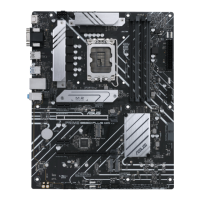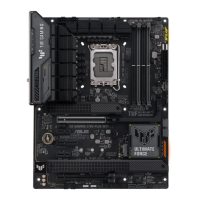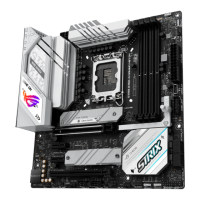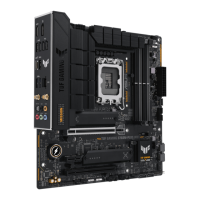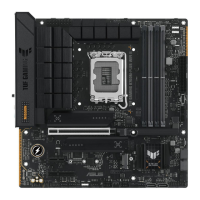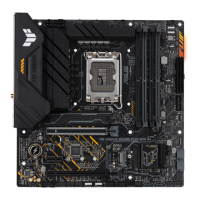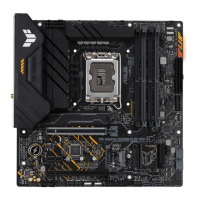1-12
Chapter 1: Product Introduction
1.4 System memory
The motherboard comes with Dual Inline Memory Modules (DIMM) slots designed for DDR4
(Double Data Rate 4) memory modules.
DIMM_A2
1st
DIMM_A1
DIMM_B2
1st
DIMM_B1
Channel Sockets
Channel A DIMM_A1 & DIMM_A2
1st
Channel B DIMM_B1 & DIMM_B2
1st
A DDR4 memory module is notched differently from a DDR, DDR2, or DDR3 module. DO
NOT install a DDR, DDR2, or DDR3 memory module to the DDR4 slot.
• You may install varying memory sizes in Channel A and Channel B. The system
maps the total size of the lower-sized channel for the dual-channel conguration. Any
excess memory from the higher-sized channel is then mapped for single-channel
operation.
• You may install 4 GB, 8 GB, 16 GB, and 32 GB unbuffered and non-ECC DDR4
DIMMs into the DIMM sockets.
• The default memory operation frequency is dependent on its Serial Presence Detect
(SPD), which is the standard way of accessing information from a memory module.
Under the default state, some memory modules for overclocking may operate at a
lower frequency than the vendor-marked value.
• For system stability, use a more efcient memory cooling system to support a full
memory load.
• Always install DIMMs with the same CAS latency. For optimal compatibility, we
recommend that you install memory modules of the same version or date code (D/C)
from the same vendor. Check with the retailer to get the correct memory modules.
• Refer to www.asus.com for the Memory QVL (Qualied Vendors Lists), and data rate
support depends on the CPU types.
Recommended memory congurations
DIMM_A2
1st
DIMM_A1
DIMM_A2
1st
DIMM_B2
1st
DIMM_A2
1st
DIMM_B1
DIMM_B2
1st
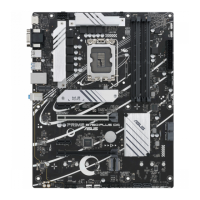
